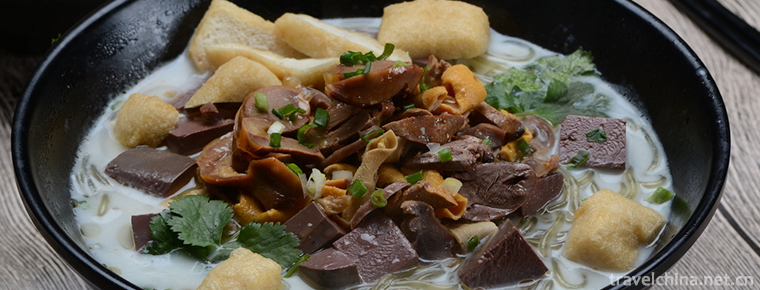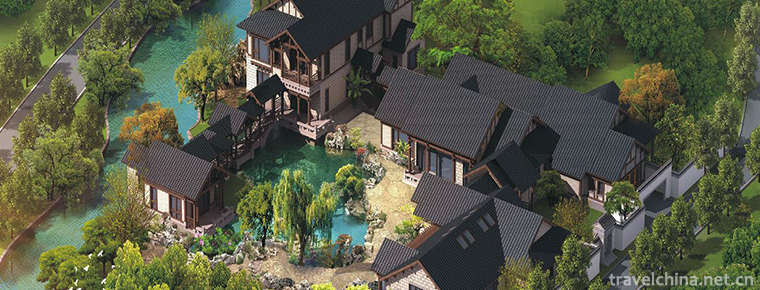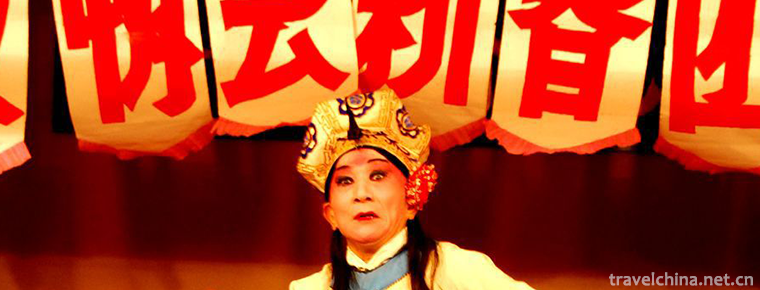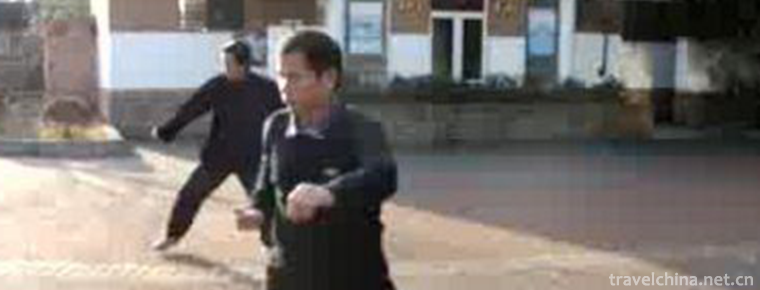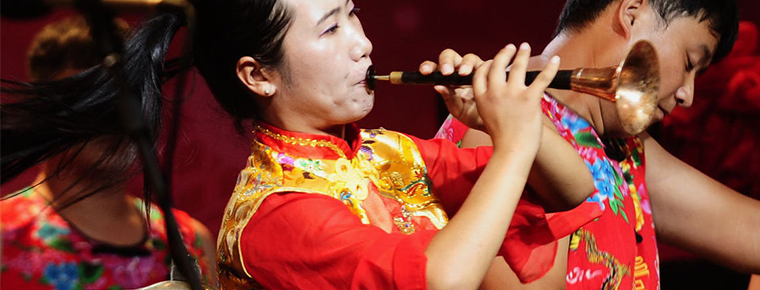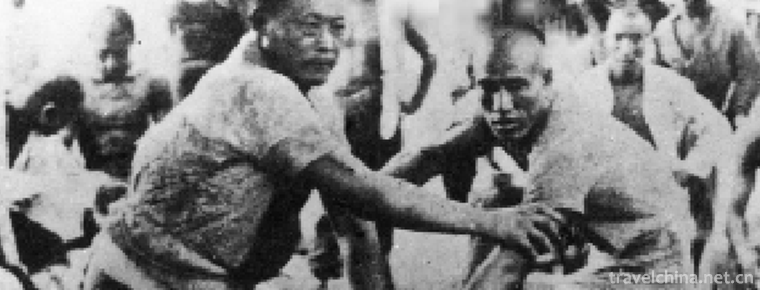Qingtian Stone Carving
Qingtian Stone Carving
Qingtian Stone Carving, a local traditional art in Qingtian County, Zhejiang Province, is one of the national intangible cultural heritage.
Qingtian stone carving originated in the period of "Kanze Culture" 5000 years ago. During the Tang and Song Dynasties, there were breakthroughs in creative themes and techniques. During the Five Dynasties, subject matter capture became widely used as a religion item. During the Yuan and Ming Dynasties, Qingtian stone carving had a high level of round carving skills. Up to the Qing Dynasty, Qingtian stone carving absorbed the craftsmanship of "Qiaoyu" and pioneered the technique of "multi-level carving" in Chinese stone carving. Qingtian stone carving is a school of its own. It enlarges its atmosphere, is exquisite and delicate, has both form and spirit, and its tone is realistic and meaningful.
On May 20, 2006, Qingtian stone carvings were selected into the first batch of national intangible cultural heritage list, the heritage number_-33. In May 2018, Qingtian Stone Carving was selected as the first national revitalization catalogue of traditional crafts.
historical origin
Qingtian stone carving has a long history. In the Zhejiang Museum, there are four stone piglets carved in Qingtian during the Six Dynasties, which were the tomb supplies at that time. Xiaoshi pig, though concise and rugged, records the history of stone carving in Qingtian more than 1500 years ago. The lines of the works are concise, the shapes are simple and simple, and the form and spirit are both in the works. The artistic features of Han and Wei can be seen.
During the Tang and Song Dynasties, Qingtian stone carvings developed. The stone statues of Qingtian in the Wuyue period of the Five Dynasties discovered in the twin towers of Longquan show that there was a breakthrough in the theme and technique of the stone carvings of Qingtian in the Tang Dynasty. By the Song Dynasty, Qingtian stone carving absorbed the production technology of "Qiaoyushi", used the skills of "modelling according to circumstances" and "choosing according to color", and gave full play to the advantages of stone color, stone quality and carvability of Qingtian stone itself, creating a pioneer of "multi-level carving" technology. Multi-level carving is a major feature of Qingtian stone carving. It is difficult for any jade carving to delicately depict and deal with complex layers.
In the Qing Dynasty and the early Republic of China, Qingtian stone carvings were often selected as tributes as famous products in the south of the Yangtze River. On the Eighty-Day Longevity Festival of Qianlong, ministers used Qingtian stone carvings to make a set (60 pieces) of "Baodian Fushu" seals for birthday ceremonies (the existing Beijing Palace Museum). With the opening of ocean-going commerce and trade, Qingtian stone carvings have been exported to Britain, the United States and France. They have participated in many international competitions, and won prizes at the Paris Games in 1899, Belgium Games in 1905 and the Pacific World Exposition in 1915. In China, in 1909, Qingtian Stone Carving won a silver medal at the Nanyang Exercise held in Nanjing.
The Qingtian County Chronicle of Guangxu in Qing Dynasty has a record of "Zhao Zi-ang began to take the lamplight stone of his hometown for printing, and it prevailed in the Ming Dynasty". Zhao Ziang's reputation for painting and calligraphy is so great that his achievements in using the backlog of Qingtian stone engravings have been forgotten for a long time. Wen Peng of the Ming Dynasty was a lucky man. By the side of Xihongqiao in Nanjing, he happened to meet an old man who carried Qingtian stone. He bought four baskets of Qingtian permafrost, which enabled him to display his artistic talent of seal engraving and become a master of seal engraving, thus creating a new era of seal engraving in China. In the Ming Dynasty, Qingtian Stone, which was the most warm and lovely stone in the world, made an indelible epoch-making contribution to the development of ancient seal carving art in China. By the Qing Dynasty, Qingtian's stone sculptures, such as "the great immortal Buddha, the small cup, several cases, the fine seal carving of Jiaojiao, the recalcitrant tiger, leopard, bear and lion", had been expanded from practical products to ornamental products.
According to historical records, Qingtian stone carving began in the Six Dynasties. It pays attention to applying skills according to aptitude and color. It has stone, blanking, carving, wax sealing, embellishing and other processes, especially carving skills. It is also used alternately in round carving, carving, relief and line carving. Qingtian stone carvings have a wide range of themes, fish, insects, flowers, birds, landscape figures, are meticulously carved, both spiritual and physical, realistic and meaningful methods are complete, the atmosphere is not lost in refinement, process specifications, self-contained.
After the founding of New China, Qingtian stone carving has developed rapidly. More than 10,000 stone carving practitioners have an annual output value of hundreds of millions of yuan, and their works are exported to more than 40 countries and regions.
Inheritance and Protection
Inheritance value
Qingtian stone carving is popular not only because of its exquisite carving skills, but also because of its precious carrier, Qingtian stone. Qingtian stone carving is an excellent national culture created by generations of stone artists and appreciators. It is an art with life and soul. In the self-power of functional aestheticization, some aesthetic tendencies are stronger, or their utilitarianism focuses on spiritual will rather than the original form of material function. Their value transformation seems more natural and smooth, and more loved by modern people.
Its rich content and theoretical guidance value are the essence of traditional craft culture. It is of great significance to the construction of material culture with Chinese characteristics in the 21st century.
Current situation of inheritance
High-quality pyrophyllite has been exploited for more than a thousand years, and its resources are nearly exhausted. At the same time, the scale of Qingtian Stone Carving Handicraft Workshop is gradually shrinking. Traditional techniques are in danger of losing their heritage and need to be rescued and protected urgently.
Heritage figures
Nie Dongfang, born in October 1928, male. June 2009 was selected as the third batch of national intangible cultural heritage successors. Declaration item: Qingtian stone carving.
Zhang Aiting was born in February 1939, male. In 2012, he was selected as the fourth batch of national intangible cultural heritage successors. Declaration item: Qingtian stone carving.
Zhang Aiguang, male, Han nationality. In 2018, he was selected as the fifth batch of national intangible cultural heritage successors. Declaration item: Qingtian stone carving.
protective measures
Qingtian is the home of stone carving, and stone carving is the gold card of Qingtian. Qingtian local government and all walks of life attach great importance to the propaganda, inheritance and development of Qingtian stone carving, a national intangible cultural heritage. Qingtian Stone Carving Museum was built in 2006, Qingtian Stone Carving Art School was founded in 2008 relying on Qingtian Vocational and Technical School, Qingtian Chinese Stone Culture Tourism Scenic Area was founded in 2009, and a small stone carving town was built in the mountain pass of the birthplace of Qingtian Stone Carving.
social influence
Honorary recognition
During the reign of Emperor Qianlong in the Qing Dynasty, the Minister of heaven paid tribute to the emperor with a set of sixty seals of Qingtian stone carvings "Baodian Fushu". During the Tongzhi period, Qingtian Stone Carvings were exhibited at the "St. Louis Expo" in Chicago, USA. During Xuantong period, Qingtian stone carvings were exhibited at Nanyang Exercise in Nanjing and won a silver medal.
In 1915, Qingtian Stone Sculpture won the Silver Medal, the highest honor award at the Panama Pacific Expo (USA).
In 1982, Qingtian Stone Carving won the first National Arts and Crafts Hundred Flowers Award. Three works, Sorghum (Lin Rukui's), Spring (Zhou Baiqi's) and Autumn (Ni Dongfang's), won the second prize for excellent creative design.
In 1985, Vineyard (Liuxiushan) won the first prize of Excellent Creative Design in the Fifth China Arts and Crafts Hundred Flowers Award. Shanghai People's Fine Arts Publishing House publishes the postcard Qingtian Stone Carving. Geng Biao, Chen Muhua, Wang Renzhong and other party and state leaders attended the Qingtian Stone Sculpture Fair held in Beijing. Defense Minister Zhang Aiping inscribed the inscription "Spiritual Craft Spirit" for Qingtian stone carvings.
In 1990, Vineyard (co-authored by Zhang Mei) was presented for permanent display in the headquarters showroom of the World Trade Center Association in New York, USA. Seal Carving (started by Xiafa) won the first prize of Excellent New Products in the 9th China Arts and Crafts Hundred Flowers Award.
In 1992, the Ministry of Posts and Telecommunications issued a set of four special stamps for stone carvings, Chun (Zhou Baiqi's work), sorghum (Lin Rukui's work), bumper harvest (Zhang Aiting's work), and Huahao Yueyuan (Ni Dongfang's work). Qingtian County Party Committee and the county government held the first stone carving culture festival, which was reported by CCTV, Economic Daily and other news media. Qingtian Stone Stamp Memorial Book was published.
At the West Lake Expo in Hangzhou in 2000, Qingtian's stone sculptures Zhongkui Married his sister, Wanli River and Mountain, and Jugao Shengyuan won the gold medal.
Important Exhibitions
In 1972, U.S. President Nixon visited China to make 500 stone carvings "elephants" in Qingtian and bring them back to the United States.
In 1956, Qingtian's stone carvings were presented as a national gift to Voloshilov, Chairman of the Soviet Union's Supreme Soviet Presidency, and to Sukarno, President of Indonesia.
In 1978, more than 20 new works of Qingtian Stone Sculpture participated in the National Arts and Crafts Exhibition. Comrade Deng Xiaoping praised "Millet" (Nie Dongfang's works), "Beautiful use", "Jun Ma" (Lin Yaoguang's works) was selected as a national gift and presented to President Kim Il Sung of the DPRK.
In 1980, the first TV documentary "Qingtian Stone Sculpture" was filmed and broadcast by Zhejiang TV Station. Qingtian County Arts and Crafts Company holds "Qingtian Stone Carving Exhibition" in Guangzhou.
In 1989, nine pieces of Qingtian's jade carvings, such as Myrica rubra, Lion Dance and Character Printing, participated in the Chinese Arts and Crafts Exhibition.
In 1994, five stone carvings, Songhe Tongchun (Lin Rukui's), Plum Blossom Fragrance Coming from Bitter Cold (Ni Dongfang's work), Zhongkui (Lin Fuzhao's work), Zhiqiu (Liuxiushan's work), Yingchun (Lin Bozheng's work), were selected and sent to Beijing for the 45th Anniversary of the founding of the People's Republic of China's Social Development Achievement Exhibition.
In January 1999, with the approval of the Qingtian People's Government, the Qingtian Stone Carving Industry Management Office was established. In March of the same year, Qingtian Stone Sculpture Exhibition was held in Shanghai.
From March 21 to April 21, 2014, the Chinese Traditional Craft Research Association, together with the Stone Carving Industry Association of Qingtian County, Zhejiang Province and the New World Modern Collections Center, held the exhibition of Chinese Qingtian Master Stone Carvings at the New World Treasure Museum on the 8th floor of Shanghai Tourist Products Shop, 558 Nanjing East Road, Shanghai.
Cultural anecdotes
Legend has it that in ancient times, a young peasant lived in Qingtian Shankou Village and lived by selling firewood. One day, when he was cutting firewood on the mountain, he accidentally chopped the firewood knife on the stone. The stone was chopped off and picked up. The stone was bright, colorful and beautiful. He took the stone home, polished it into a stone bead and hung it around his daughter's neck. The villagers scrambled to watch, and later followed suit. They went up the hill to look for the wonderful stone and made all kinds of decorations.

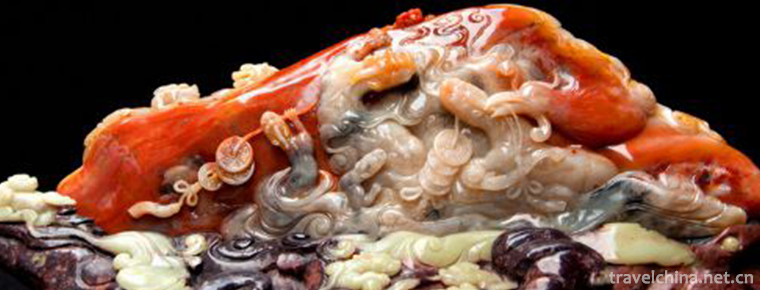
-
Duck blood soup with vermicelli
Duck blood vermicelli soup is a famous specialty in Nanjing, belonging to Jinling food....
Views: 218 Time 2018-10-26 -
Shanghai Science and Technology Museum
Shanghai Science and Technology Museum is a comprehensive natural science and technology museum with Chinese characteristics, times characteristics and Shanghai characteristics.
Views: 510 Time 2018-12-05 -
wunv mountain city
Wunu Mountain City is a national key cultural relic protection unit. It was built by Zhu Meng, the ancestor of Koguryo. The three gates of the city are narrow at the bottom of the wall.
Views: 142 Time 2018-12-22 -
Huanshui Bay Hot Spring Resort
Huanshui Bay Hot Spring Tourist Area of Anyang City is located at the exit of Anlin Expressway in Anyang Hi-tech Development Zone, Henan Province, close to National Highway 107 and the west side of Be.
Views: 305 Time 2019-01-17 -
High cavity
Gaoqiang is one of the four major tunes in Chinese opera. Gaoqiang was originally called "Yiyang Cavity" or "Yiqiang Cavity", because it originated in Yiyang, Jiangxi Province..
Views: 120 Time 2019-04-30 -
Guilin fishing drum
Guilin fishing drum, commonly known as sentiment, is the local traditional rap and singing art of Guilin. The Song Dynasty was introduced into Guilin from the north, .
Views: 145 Time 2019-05-02 -
Block door La shou men
Stopper Gate is one of the traditional Chinese boxing schools. It originated in Shaolin and was introduced to Tianjin in the early Qing Dynasty. It originated in Sichuan. It was the earliest southern .
Views: 214 Time 2019-05-10 -
Drum and percussion music in Southwest Shandong
Southwest Shandong drum music is a kind of traditional folk instrumental music in Shandong Province. It takes Jiaxiang drum music as a typical representative and mainly distributes in Jining, Zaozhuan.
Views: 326 Time 2019-05-15 -
Water Encouragement
Water drum dance is a kind of popular dance spread between the De'ang and Miao nationalities. It combines water, drum and dance to worship ancestors, pray for good weather and peace in villages. Howev.
Views: 140 Time 2019-06-15 -
Flyover wrestling
In the 1930s, when Peiping wrestling was very popular, Peiping wrestling was famous all over the country. At that time, the strongest wrestling master of Peiping overpass was Shen San (Shen Yousan), B.
Views: 373 Time 2019-06-21 -
Beijing University of Posts and Telecommunications
More than sixty years of wind and rain, more than sixty years of spring and autumn fruits. In the north of Mingguang and the south of Jimen, the ancient city walls witness the ever-lasting radio waves.
Views: 116 Time 2019-09-22 -
Revenue and expenditure of Mianyang
In 2019, Mianyang's general public budget revenue will reach 13.115 billion yuan, an increase of 5.3%; general public budget expenditure will reach 45.334 billion yuan, an increase of 11.1%. The balance of RMB deposits in financial institutions was.
Views: 177 Time 2020-12-14
